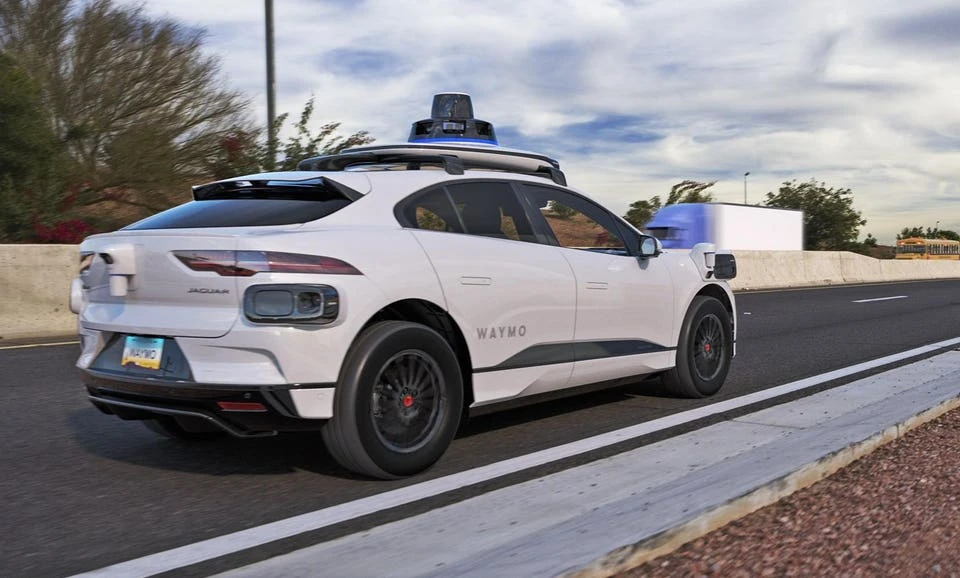Waymo’s Robotaxis Are Hitting The Highway, A First For Self-Driving Cars
Starting this month, the alphabet inc. unit will operate autonomous Waymos on Phoenix-area freeways. It’s the first robotaxi company to prepare for higher-speed rides, as rivals struggle with safety problems.
waymo‘s Expansion to Phoenix-area Highways
Autonomous Waymo robotaxis will start logging test miles on Phoenix-area highways this month. Waymo, the first company to operate a public robotaxi service, is preparing for another big step: carrying passengers on highways in autonomous vehicles, not just on lower-speed city and suburban streets.
Highway Operations and Vehicle Specification
Starting this month, the alphabet inc. unit plans to begin running its electric Jaguar I-PACE SUVs on stretches of freeway around Phoenix. They’ll operate in full autonomous mode, initially carrying only Waymo employees.
Preparation and Experience at waymo
The company, which has been developing robotic driving technology since 2009, isn’t saying how quickly it’ll expand the service to fare-paying customers, but it intends to be the first company to do so. While highways are simpler to navigate than city streets, there are other risks related to high speeds or unexpected objects in lanes.
Integration and Consistency in technology
Waymo is comfortable putting its vehicles on highways after years of testing robotic heavy-duty trucks. The goal is for the “Waymo Driver,” the company’s name for its AI-enabled system, to have the same capabilities regardless of vehicle type or location. It’s a bold move that seems almost audacious coming amid greater government scrutiny of automated driving technology, sparked by safety problems at rival Cruise and massive recalls of Tesla vehicles in the U.S. and China.
Comparative Safety Performance and Regulations
waymo, which operates a paid driverless ride service around Phoenix and is testing robotaxis in San Francisco, Los Angeles, and Austin, has so far avoided major accidents and pedestrian injuries in its 15 years of existence. waymo said it’s keeping both Arizona and the National Highway Traffic Safety Administration, or NHTSA, informed of its plans, just as it’s always done. “Over the course of years we’ve made them more comfortable when we say, ‘hey, we’re going to take this big, next step. Here’s what we’re doing, when we’re doing it and roughly how we’ve approached the safety aspects and everything else,” Sofman said. “I think there’s a goodwill and a trust that’s been built up that we’re trying our best to make sure we preserve.”
Comparison with Competitors and Regulatory Approach
In November, General Motors-backed cruise lost its license to operate a robotaxi service in California after one of its vehicles hit and dragged a pedestrian in San Francisco who’d been struck moments earlier by another car. Since then, the company has halted the operation of its entire fleet and laid off nearly a quarter of its staff.
“We haven’t changed anything in terms of how we operate. We’ve always been overwhelmingly safety-conscious and never compromise on that,” Sofman said. While highways are simpler to navigate than city streets, lacking complicated intersections, turns and, usually, pedestrians and bicyclists, there are other risks related to high speeds or unexpected objects in lanes. It’s a bold move that seems almost audacious coming amid greater government scrutiny of automated driving technology, sparked by safety problems at rival Cruise and massive recalls of Tesla vehicles in the U.S. and china.
Steadfast Safety and industry Challenges
Since then, the company has halted the operation of its entire fleet and laid off nearly a quarter of its Staff. Waymo, which operates a paid driverless ride service around Phoenix and is testing robotaxis in San Francisco, Los Angeles, and Austin, has so far avoided major accidents and pedestrian injuries in its 15 years of existence.
Challenges in Automated Driving technology and Potential Hurdles
“Risk is directly proportional to the speed of operations, and as we saw in the Bay Bridge tunnel last year when a car with computer vision performs a phantom braking maneuver at 65 mph, the outcomes can be pretty catastrophic,” said Missy Cummings, who runs the Autonomy and Robotics Center at George Mason University and was previously a safety advisor for NHTSA.
Future of waymo and Autonomous Driving
An electric Waymo robotaxi in Phoenix highway traffic. It’s a bold move that seems almost audacious coming amid greater government scrutiny of automated driving technology, sparked by problems at Cruise and massive recalls of Tesla vehicles in the U.S. and china. Waymo, which operates a paid driverless ride service around Phoenix and is testing robotaxis in San Francisco, Los Angeles, and Austin, has so far avoided major accidents and pedestrian injuries in its 15 years of existence.
Source: forbes








No Comments